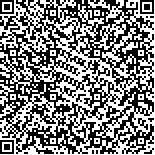输出:Bib Tex | EndNotre
摘要:目的 针对LBP算法对边缘及噪声信息比较敏感,提出一种统一化的局部均值模式(ULMP)描述算子。考虑到全局和局部特征在识别上的互补性,提出一种ULMP描述和双加权融合的人脸识别方法。方法 首先利用ULMP算法获得整幅图像的编码图,接着将其分块,统计每一子块的直方图获得局部纹理特征,并结合BP神经网络得到局部分类结果。引入云模型求取不同子块的权值,对局部分类结果进行加权融合。整体纹理特征的获取是将不同子块的直方图特征串联。在得到全局和局部的分类结果后,将两者加权集成,获得最终的识别结果。结果 在ORL和Yale人脸库上进行实验,ULMP具有很好的识别性能。5幅测试样本时,在ORL库上取得了95.9%的平均识别率,分别比局部二值模式(LBP)、MCT、局部方向模式(LGP)、统一的LBP(ULBP)和局部中心二值模式(CSLBP)高11.3%、10.6%、9.5%、8.9%和3.9%;在Yale库上取得了97.4%的识别率,分别比LBP、MCT、LGP、ULBP和CSLBP高19.9%、17.7%、10.7%和0.7%。在ORL和Yale人脸库上,本文提出的双加权融合模式分别取得了98.5%和98.34%的平均识别率,高于任何单一模块。结论 本文提出的纹理提取算法ULMP,具有很好的平滑噪声及边缘信息的作用,适用于面部纹理特征的提取。利用云模型求取的权值的方法能够较好地发挥局部分类器间的集成作用,最终有效地提高了系统的整体性能。双加权融合模式是一种精确且有效的人脸识别方法,适用于静态人脸图像的匹配识别。
AbstractObjective The LBP(local binary pattern) algorithm is sensitive to edge and noise. Thus, this study proposes a new algorithm called uniform local mean pattern (ULMP). Considering the complementarity of global and local features on recognition, this study proposes a face recognition method based on ULMP description and double weighted decision fusion for classification. Method First, we use the ULMP algorithm to derive the code diagram of the entire image. The concrete steps to obtain the eight binary codes are implemented by comparing the eight average pixels with the center pixel. Each of the eight values is obtained by computing the average pixels of the eight directions, three horizontal directions, three vertical directions, and two diagonal directions. Each binary code is multiplied by the corresponding weight coefficient and then added to derive the ULMP coding value of the center pixel and the code pattern of the entire image. Then, the code diagram is divided into equal sub-blocks and each sub-block histogram is assessed to determine the local texture features. The global texture feature is obtained by connecting the histogram of different sub-block features. To emphasize the importance of different sub-blocks in the final recognition, this study introduces the cloud model and structure-based classifiers by constructing sub-image sets to obtain the weight of each sub-block. In the testing phase, each block of the statistical characteristics of a test sample is combined with the BP neural network to determine the posterior probability of each category. We use the weights calculated by the cloud model fused with the linear weighted decision to derive the local classification results. After obtaining the results of local and global classification, we conducted weighted integration to obtain the final recognition results. Result The experimental results on the ORL and Yale face database show that the ULMP exhibits good recognition performance. The average recognition rate is 95.9% on the ORL database with five test samples. The proposed approach increases the recognition rate of LBP, MCT(modified census transform), LGP(local gradient patterns), ULBP, and CSLBP by 11.3%, 10.6%, 9.5%, 8.9%, and 3.9%, respectively. The average recognition rate is 97.4% on the Yale database with five test samples. The proposed approach increases the recognition rate of LBP, MCT, LGP, ULBP, and CSLBP by 18.9%, 17.7%, 17.1%, 10.7%, and 0.7%, respectively. At the same time, the double weighted decision fusion pattern proposed in this study obtained the average recognition rates of 98.5% and 98.34% on ORL and Yale database, respectively. These rates are higher than any single module. Conclusion In this study, a new texture extraction algorithm called ULMP is proposed. The ULMP has a good effect on smoothing noise and edge information and can achieve a high recognition rate. The ULMP is suitable for extracting facial features. At the same time, the method employs the cloud model to derive the weights that can better develop the integration between the local classifiers. Ultimately, the ULMP improves the overall performance of the system and obtains a higher recognition rate. The ULMP is compared with other methods to verify its validity. Results show that the double weighted fusion model is a precise and effective method for face recognition.
Key wordsface recognition local mean pattern (LMP) double weighted decision fusion cloud model
文章编号: 0258_7106 (2016) 01_0018_15 中图分类号: P618.41 文献标志码:A
投稿时间:2015-09-07修订日期:2015-12-16 改回日期:2015_07_11
基金项目
**通讯作者耿新霞, 女, 1979年生, 助理研究员, 成矿规律研究方向。 Email: gen gxinxia@cags.ac.cn
任福继,李艳秋,许良凤,胡敏,王晓华.局部均匀模式描述和双加权融合的人脸识别[J].杂志名称,2016,(5):565-573
Ren Fuji,Li Yanqiu,Xu Liangfeng,Hu Min,Wang Xiaohua.Face recognition method based on local mean pattern description and double weighted decision fusion for classification[J].杂志名称,2016,(5):565-573

